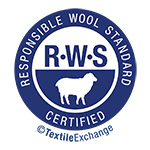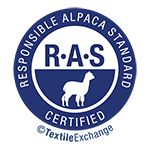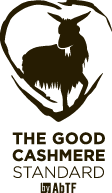Material
Lär dig mer om materialen vi använder. De är alla omsorgsfullt utvalda för att spegla våra designateljéers konstnärliga kreativitet.
Bastfamiljen är en fibergrupp som har en gemensam nämnare: Fibrerna utvinns ur de innersta delarna av växternas stjälkar. Bastväxter växer vanligtvis i kallt och regnigt klimat och kräver väldigt lite vatten för att trivas. Dessutom används mindre gödnings- och bekämpningsmedel jämfört med grödor som konventionellt odlad bomull.
LINNE
Linne är en naturlig och förnybar fiber som utvinns ur kulturväxten lin. Linne har luftiga egenskaper och leder bort fukt från huden. Det är också lite styvare än många andra tyger. Det är starkt och hållbart och blir mjukare och glansigare genom användning och tvätt.
RAMI
Rami, även kallat kinagräs, är en cellulosafiber som påmminer om linne och tillverkas av fibrer från stjälken på en sorts nässelväxter. Ramifibrer är väldigt slitstarka, men har samtidigt en elegant känsla. Materialet är känt för sin förmåga att behålla formen och ger tyget en vacker, silkesaktig glans. Rami har god absorptions- och andningsförmåga.
HAMPA
Hampa utvinns från stjälken på växten cannabis sativa. Hampafibrer är hållbara och väldigt töjbara. Den används ofta för att framställa rep, canvas, linne och kläder. Hampafibrer är också slitstarka och behåller formen väl, samtidigt som de blir mjukare med varje tvätt.
Bomull är en naturlig och förnybar fiber som utvinns ur bomullsplantan. Bomull är otroligt mångsidigt, mjukt och luftigt. Det är enkelt att färga och kan blandas med en rad andra fibrer. Pimabomull är en av de finaste bomullssorterna med lyxigt len yta. Fibrerna är extra långa, minst 34 mm, vilket ger ett slätare material. Sedan 2020 använder vi uteslutande ekologisk bomull, återvunnen bomull och bomull certifierad av organisationer som Better Cotton.
ÅTERVUNNEN BOMULL
Återvunnen bomull tillverkas genom att mekaniskt återvinna textilier och spinna fibrerna till ny tråd. Textilierna som används är antingen produktionsspill eller textilier som lämnats in för återvinning. Vår återvunna bomull är spårbar och verifierad av organisationer som utgör tredje part. År 2024 var 10 procent av den bomull som vi köpte in återvunnen.
EKOLOGISK BOMULL
Ekologisk bomull odlas utan konstgjorda bekämpnings- och gödningsmedel och innehåller inte genetiskt modifierade organismer (GMO). Vid odling av ekologisk bomull tas hänsyn till faktorer som gödning och biologisk mångfald i jorden där den växer. All vår återvunna bomull är spårbar och verifierad av organisationer som utgör tredje part. År 2024 var 37 procent av den bomull som vi köpte in ekologisk.
ÖVERGÅNGSBOMULL
Övergångsbomull kommer från gårdar som genomgår ett treårsprogram för att ställa om sin verksamhet från konventionell till ekologisk odling. Under de här tre åren arbetar gården enligt principerna för ekologisk bomullsodling och använder därmed vare sig konstgjorda bekämpnings- eller gödningsmedel eller genetiskt modifierade organismer (GMO). Gårdarna kontrolleras varje år av en oberoende part, tills skörden kan certifieras som ekologisk. Genom att köpa in övergångsbomull bidrar vi till uppbyggnaden av ekologisk produktion och stöder lantbrukare som vill ställa om till ekologisk odling. År 2024 var 10 procent av den bomull som vi köpte in övergångsbomull.
BETTER COTTON
Better Cotton är en ideell organisation som hjälper bomullsodlare att införa jordbruksmetoder som innebär långsiktiga ekonomiska, miljömässiga och sociala fördelar, både för det enskilda lantbruket och lokalsamhället i stort.
Den här sortens bomull köps in via ett system för massabalans, vilket innebär att bomull från Better Cotton-gårdar i tillverkningsprocessen kan blandas med konventionell bomull. Det går därför inte att spåra bomull från programmet rent fysiskt. År 2024 kom 43 procent av den bomull som vi köpte in från Better Cotton. Genom att handla av Better Cotton bidrar vi till att finansiera ett globalt initiativ som ger fler lantbrukare tillgång till organisationens utbildningar , så att de kan nå fler lantbrukare och få större spridning.
Dun har isolerande och värmande egenskaper, samtidigt som det är lätt och luftigt. Genom att även använda fjäder kan vi minska mängden dun, samtidigt som fyllningen leder bort fukt bättre. Vi använder 80 % dun och 20 % fjäder i våra fyllningar. Vi köper in dun och fjädrar från återvunna källor. Dun och fjädrar som används av oss kommer aldrig från exotiska fåglar, exempelvis struts.
ÅTERVUNNA DUN OCH FJÄDRAR
Återvunna dun och fjädrar återvinns från produkter som har lämnats in för återvinning, exempelvis duntäcken och dunkuddar. De återvunna dun och fjädrar som vi använder är spårbara och verifierade av ett oberoende organ.
Läder är ett väldigt mångsidigt och flexibelt material som tillverkas genom att garva djurhudar och skinn. Det är också väldigt hållbart och kan behålla sina egenskaper i många år om det sköts om på rätt sätt.
Vi köper bara in läder från ko, buffel, får, get och gris som har fötts upp för köttproduktion. Vi köper aldrig in
• skinn från exotiska djur eller skinn från vilda djur
• läder eller skinn från ofödda eller nyfödda lamm
Vi är medlemmar i Leather Working Group (LWG), en gemenskap där ett stort antal intressenter arbetar för att bygga upp en mer ansvarsfull läderindustri. LWG sätter standarder för lädertillverkningsprocessen med hjälp av olika kriterier, bland annat när det gäller miljömässig och social hållbarhet, kemikalier och spårbarhet. Allt läder som vi använder köps in från LWG-certifierade garverier.
GARVNINGSMETODER
Kromgarvat läder garvas med trevärdigt kromsulfat och andra kromsalter. Garvningsmetoden förknippas dock med miljöproblem i samband med återvinning av kemikalierna och kan även orsaka hälsoproblem som eksem.
I slutet av 2025 ska allt läder som vi använder produceras med en kromfri garvningsmetod. År 2024 garvades 97 procent av våra läderprodukter med en kromfri garvningsmetod.
I kromfritt (eller metallfritt) och vegetabilgarvat läder används syntetiska eller vegetabiliska extrakt stället för kromsulfat.
MIRUM®
MIRUM® är ett innovativt material som tillverkas av naturgummi, vegetabilisk olja, naturliga pigment och mineraler. MIRUM® tillverkas av 100 % naturliga material, innehåller inte plast och är ett alternativ till djurläder.
MMCF (man-made cellulosic fibres) är ett samlingsnamn för regenererade eller återvunna cellulosafibrer, vanligtvis framställda av trä. De kan även utvinnas av andra råvaror, exempelvis biprodukter från jordbruk och industri eller återvunnet material efter konsumentledet.
Från och med 2025 kommer alla våra återvunna cellulosafibrer att köpas in från hållbart förvaltade skogar för att säkerställa skydd av urskogar och hotade skogar. Vi har också inlett arbetet med att ersätta trä med nästa generationens fibrer från produktionsspill och återvunnet material efter konsumentledet, exempelvis CIRCULOSE®.
CIRCULOSE® är ett innovativt material tillverkat av 100 % kasserade textilier, där bomull från insamlade kläder och produktionsspill återvinns. Cellulosan löses upp till en massa som kan användas för att framställa viskos, lyocell, modal, acetat och andra typer av konstgjorda cellulosafibrer. Traditionellt tillverkas viskos av 100 % trämassa. Det unika med CIRCULOSE® är att vi steg för steg kan börja ersätta träet med textil.
VISKOS
Viskos är en slät och stark fiber med hög absorptions- och andningsförmåga. Det används till en rad olika material. Det ger ett mjukt och vackert fall. Viskos finns i två varianter: stapelfiber och filamentfiber.
Stapelfiber
Kortare fibrer som spinns på samma sätt som bomull. Tyg av stapelfiber känns ungefär som bomull och är vanligtvis mjukt och luftigt. De vanligaste stapelfibrer vi använder är Lenzing™ Ecovero™ och Livaeco™. De är varumärkesskyddade viskosalternativ till konventionell viskos. Fibrerna kommer från ansvarsfullt förvaltade skogar för att skydda urskogar och hotade skogar.
Filamentfiber
Filamentfibern är en enda lång tråd, precis som silkesfibern. Fibern är mjuk och glansig och filamentviskos har därmed ett utseende och en känsla som påminner om silke. Den vanligaste viskosfilamentfiber som vi använder är Ecojilin. Den tillverkas av bomullslinter (lump) i stället för trä. Bomullslinter är en kasserad biprodukt från bomullsfiberproduktion och utgörs av de bomullsfibrer som är för korta för att spinna till tråd. Lintern löses upp, bearbetas och spinns till ny fiber.
LYOCELL
Lyocell är en regenererad cellulosafiber som vanligtvis framställs av trä, men råmaterialet kan även bestå av andra cellulosabaserade material. Dess unika fysiska egenskaper skapar en stark fiber som effektivt leder bort fukt och ger naturlig komfort.
TENCEL™-lyocell är ett varumärke som tillhör Lenzing AG och produceras i en process där 99,8 % av vattnet och kemikalierna återanvänds.
MODAL
Modal är en väldigt flexibel fiber och därför känd för sin enastående mjukhet. Modal är en regenererad cellulosafiber som vanligtvis framställs av trä. Vi använder Tencel™-modal tillverkad av trämassa från ansvarsfullt förvaltade skogar för att skydda urskogar och hotade skogar. Varumärket tillhör Lenzing AG och används som ett alternativ till konventionell modal.
KUPRO
Kuprotyger är lika luftiga som bomull, med elegant fall och samma vackra utseende och känsla som silke. Kupro är en regenererad cellulosafiber framställd av bomullslinter i stället för trä. Bomullslinter är en kasserad biprodukt från bomullsfiberproduktion och utgörs av de bomullsfibrer som är för korta för att spinna till tråd. Lintern löses upp, bearbetas och spinns till ny fiber.
ACETAT Acetat är ett cellulosabaserat material som vanligtvis framställs av trä, men råmaterialet kan även bestå av andra cellulosabaserade material. Det kan vara antingen ett massivt material eller en textilfiber. Acetattextilfibrer har strålande färg med vacker glans. Tråden omvandlas till mjuka och lättskötta tyger med hög komfort. Acetat finns som filamentfibrer (långa) och stapelfibrer (korta). Vi använder Naia™ tillverkad av trämassa från ansvarsfullt förvaltade tall- och eukalyptusskogar för att skydda urskogar och hotade skogar. Fibern är spårbar från träd till tråd. Produktionsprocessen är ett slutet system där lösningsmedel återvinns och återanvänds.
Silke är berömt för sin vackra lyster och lyxiga känsla. Det är en naturfiber som utvinns ur kokonger som spinns av silkesmaskar. Silke är ett väldigt känsligt och ömtåligt material, men kan vara väldigt hållbart om det sköts på rätt sätt. Silke har en naturlig förmåga att skapa perfekt temperaturbalans och håller dig varm på vintern och sval på sommaren.
EKOLOGISKT MULLBÄRSSILKE
Med sin rena, vita färg och vackra struktur anses mullbärssilke vara ett av världens allra finaste naturmaterial. Det framställs av silkesmaskar av arten bombyx mori, som lever av mullbärsträd. Ekologiskt silke är en garanti för att mullbärsträden odlas enligt reglerna för ekologiskt jordbruk, utan konstgjorda bekämpningsmedel och andra potentiellt skadliga kemikalier.
TUSSAH-SILKE
Vildsilke spunnet av silkesmasken tussah som har en naturligt gyllene färg med vacker struktur. Tussah-silke används främst i naturlig form, eftersom det är svårt att färga.
ÅTERVUNNET SILKE
Återvunnet silke tillverkas genom att mekaniskt återvinna biprodukter från silkesproduktion och spinna fibern till ny tråd.
POLYESTER
Konventionell polyester är en syntetfiber som framställs av fossila bränslen. Återvunnen polyester tillverkas av petflaskor. Petflaskorna återvinns på mekanisk väg och bearbetas till ny polyestertråd. År 2024 var 10 % av det material som vi använde polyester och 92 % av det var återvunnet.
POLYAMID/NYLON
Nylon är en av de polyamider som vi använder mest. Det framställs av syntetiskt utvunna, fossila bränslen. Återvunnen polyamid framställs av material som gamla fiskenät och heltäckningsmattor samt biprodukter från produktion. År 2024 var 81 % av den polyamid som vi använde återvunnen.
AKRYL
Akryl är ett syntetmaterial som framställs av fossila bränslen. Från och med 2025 kommer vi att sluta använda akryl i våra textilier.
Ull kommer från djur som alpacka, get och får och är en naturlig och förnybar fiber med många fördelar:
· Ull är väldigt luftigt tack vare dess förmåga att absorbera och leda bort fukt.
· Ull skapar perfekt temperaturbalans och håller dig varm på vintern och sval på sommaren.
· Ull har ett naturligt, skyddande ytskikt som avvisar fläckar.
Vi använder huvudsakligen får- och lammull, eftersom fibrerna är naturliga, hållbara och förnybara. Vi använder även merinoull från merinofår, som ger extra mjuk och lockig ull och är mycket tunnare och finare än vanlig fårull.
Från och med 1 januari 2025 ska all ull som köps in av & Other Stories antingen vara certifierad av Responsible Wool Standard (RWS), köpas in från en återvunnen källa som är certifierad av en organisation som utgör tredje part eller köpas in via jordbruksprogrammet NATIVA.
ÅTERVUNNEN ULL
Återvunnen ull tillverkas av produktionsspill eller textilier som samlats in för återvinning. Produktionsspill och insamlade textilier återvinns mekaniskt och spinns till nytt garn. År 2024 var 8 % av den ull som vi köpte in återvunnen.
RWS – RESPONSIBLE WOOL STANDARD
Responsible Wool Standard (RWS) garanterar djurskyddet för de djur som producerar ullen och att deras betesmarker förvaltas på ett hållbart sätt från gård till garn.
& Other Stories är certifierat av Responsible Wool Standard.
TE-00047206. Håll utkik efter RWS-etiketten om du vill välja produkter med RWS-certifierad ull.

NATIVA™ REGENERERAD ULL
Regenerativt jordbruk är ett samlingsbegrepp för ett stort antal jordbruksmetoder med målet att förbättra jordhälsan, öka den biologiska mångfalden, återställa vattendrag, utveckla stabila ekosystem samt minska koldioxidutsläppen från jordbruket.
NATIVA™-ull framställs med regenerativa metoder som uppfyller djurskyddsstandarder, markanvändningskrav och Responsible Wool Standard (RWS), stöder lantbrukare och lokalsamhällen och samtidigt förbättrar jordhälsan på lång sikt. NATIVA™ driver för närvarande ett projekt till stöd för kvinnor på landsbygden och erbjuder vägledning, utbildning och mentorskap i deras entreprenörsprojekt. På så sätt skapas band till kvinnor som ofta verkar isolerat i glesbygdsområden och genom projektet kan de tillägna sig färdigheter som bidrar till ekonomiskt oberoende.
År 2024 var 15 % av den ull som vi använde NATIVA™ regenererad ull.
RMS – RESPONSIBLE MOHAIR STANDARD
Mohairull är en lång, tunn och glänsande naturfiber som utvinns från getter. All mohair som används av & Other Stories kommer från gårdar som är certifierade enligt Responsible Mohair Standard (RMS).
Responsible Mohair Standard (RMS) är en garanti för att de djur som framställer mohairullen behandlas väl och att deras betesmarker förvaltas på ett hållbart sätt från gård till garn.
& Other Stories är certifierat av Responsible Mohair Standard.
TE-00047206. Håll utkik efter RMS-etiketten om du vill välja produkter med RMS-certifierad mohairull.

RAS – RESPONSIBLE ALPACA STANDARD
Alpackan ger en mjuk, hållbar och silkeslen ullfiber. Den är lätt och ullig, men fluffigare än mohair.
Från och med 1 januari 2025 är all alpackaull som köps in av & Other Stories certifierad enligt Responsible Alpaca Standard (RAS).
& Other Stories är certifierat av Responsible Alpaca Standard.
TE-00047206. Håll utkik efter RAS-etiketten om du vill välja produkter med RAS-certifierad alpackaull.

KASHMIR
Kashmirgeten ger en lyxig naturfiber som är otroligt mjuk, slät och silkeslen.
All & Other Stories-kashmir är certifierad enligt Good Cashmere Standard® från AbTF eller inköpt från återvunna källor certifierade av organisationer som utgör tredje part.
ÅTERVUNNEN KASHMIR
Återvunnen kashmir är kashmir framställd av produktionsspill eller textilier som har samlats in för återvinning. Spill och textilier återvinns mekaniskt och spinns till nytt garn. År 2024 var 37 % av all kashmir som vi köpte in återvunnen.
GCS – GOOD CASHMERE STANDARD
Good Cashmere Standard® ägs av Aid by Trade Foundation (AbTF) och ställer krav på djurskydd, markförvaltning och arbetsförhållanden för lantbrukare. År 2024 var 63 % av all kashmir som vi köpte in verifierad enligt Good Cashmere Standard® från AbTF.
Läs mer om GCS-kashmir:
www.thegoodcashmerestandard.org
